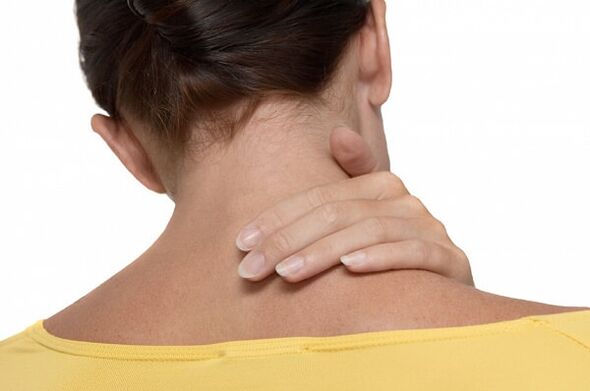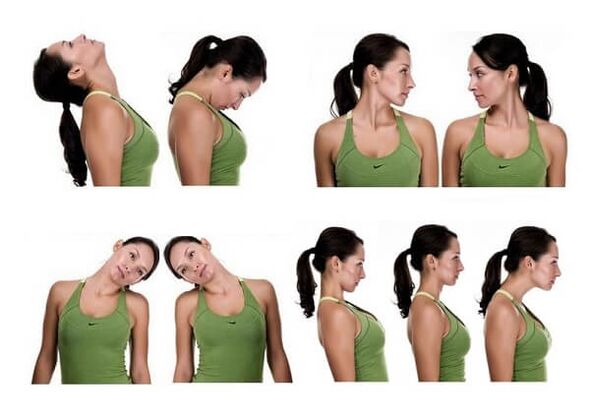
Osteochondrosis of the cervix can be called one of the most common spinal pathologies today. At the same time, according to statistics, it can be observed that more and more young people are sick with this degenerative disease, previously it was believed that osteochondrosis occurs only in older people. It is worth knowing about the symptoms of cervical osteochondrosis and home treatment, because the earlier the pathology is detected and therapy started, the less likely you are to develop complications.
Cervical osteochondrosis is a degenerative disease of the cervical spine in which the intervertebral disc is destroyed. The pathology progresses slowly, but it must be borne in mind that most degenerative changes are irreversible.
Stages of the disease
The following stages of cervical osteochondrosis are distinguished by the initial changes, which practically do not cause pain and other symptoms, for the complete destruction of the intervertebral disc:
- Preclinical phase. At this stage, there are no obvious signs of degenerative changes, they occur at the biochemical level. The patient does not experience pain or any other change in his condition.
- The stage in which degenerative changes in the nucleus pulposus increase. Changes in the pulposus nucleus lead to destabilization of the cervical spine, disturbances in the structure of the fibrous disc occur. The patient begins to experience mild pain and other symptoms.
- Stage of complete destruction of the fibrosus ring. There is an extension of the intervertebral disc - the pulposus nucleus begins to extend beyond the destroyed annulled fibrosus, displacement and subluxation of the cervical vertebrae occur. Pain syndrome and other symptoms of the disease increase significantly.
- Intervertebral disc tissue regeneration phase. The pulposus nucleus begins to be replaced by fibrous tissue, intervertebral disc scar tissue, and adjacent spinal structures are involved in degenerative processes. With the development of intervertebral disc fibrosis, the pain and instability disappear, but this condition does not mean cure.
Important!Periodically, exacerbations of the disease may occur with increased symptoms, usually after increased physical exertion.
The earlier treatment of the disease begins, the easier it is to achieve the suspension of degenerative changes. At the same time, the clinical manifestations of cervical osteochondrosis vary in their diversity, it is often impossible to diagnose the disease without a complete diagnosis, X-rays, MRI or CT.
Symptoms
The main difficulty in identifying cervical osteochondrosis is insufficiently expressed and symptoms invisible. In addition to pain syndrome, there are many vegetative symptoms that can speak to diseases of the nervous system or circulatory system, therefore, they often come in identifying osteochondrosis through misdiagnosis.
Autonomic symptoms in men are often considered less severe than pain. Perhaps this is due to the fact that men are less likely to see a doctor with symptoms of neurological disease. In women, the autonomic symptoms associated with the emotional sphere are considered more pronounced.
In general, the following symptoms usually refer to the main symptoms of osteochondrosis of the cervical spine, and all should be present at the same time:
- Pain syndrome. The pain occurs in the neck and shoulders, spreads to the shoulder blades. It can also spread to the back of the head. Also, with osteochondrosis, headaches and dizziness may occur.
- Vegetative symptoms. Due to the constriction of the nerve endings and blood vessels in the cervical spine, they arise in the cervical spine. Headaches, dizziness, nausea, palpitations, symptoms similar to those of a panic attack occur.
- Feeling of numbness, limited mobility in the upper limbs, in the area of the shoulder blades. This symptom also occurs due to tight nerve endings in the back of the cervix.
These are the main symptoms that occur in cervical osteochondrosis, often the pain syndrome is so weak that the cause of the disease begins to be sought in the field of neurology.

How to cure cervical osteochondrosis at home
Treatment of osteochondrosis of the cervix at home is possible in the early stages of the disease. Therapy should be comprehensive, including taking pain medication, therapeutic exercises, massage and a number of other procedures. Each component of therapy is essential for complete recovery.
Medicines
Pain relievers are usually required, starting with over-the-counter non-steroidal drugs. If such medications do not help, they use blockades - anesthetic injections at the wound site.
Topical corticosteroid ointments can also be used. Care must be taken with their use, because if used unreasonably, they can do harm. Such funds are strictly prescribed by prescription; their use is prohibited.
Also, with severe vegetative symptoms, tools can be used to improve the blood supply to the brain. They are described in rare cases. Sometimes, in addition to them, daily sedatives are used, which help suppress depressive symptoms arising from scratches on nerve endings.
Massage
With osteochondrosis, massaging the cervical spine is important, it helps restore blood circulation, relieving tension from tense muscles. Several different massage techniques are used, self-massage is permissible at home, to perform it, you need to tilt your head forward in a sitting position, place your hands on your neck on both sides.
Important!Under no circumstances should you put pressure on your back, otherwise the pain syndrome may worsen.
With stroke movements, you should move from the base of the head to the shoulders, trying to press but not cause pain. The procedure should last for 10 to 15 minutes.
Gymnastics
Exercise for osteochondrosis of the cervical spine is extremely important to maintain muscle tone and mobility of the cervical spine. With this disease, the neck muscles need to be trained.
The simplest exercise - in a sitting position, you should place your hands under your chin, pressing them lightly upwards. At the same time, you need to resist the pressure of the head. The exercise should be performed for fifteen seconds, over time, the duration should increase.

diets
With osteochondrosis, it is recommended that you start eating more properly, including more fresh vegetables and fruits in your diet. It is also advisable to eat more seafood and fermented milk products in order to replenish the amount of substances needed for the normal functioning of the musculoskeletal system.
Treatment with folk remedies
Folk remedies are not as effective in treating cervical osteochondrosis, but there are some prescriptions that will help with this disease. First of all, different compresses are recommended, one of the most effective is potato based. Raw potatoes should be minced, add a tablespoon of honey, put on a sore spot, cover with cling film.
Potatoes can be replaced with unleavened dough. In the absence of inflammation, the compress can be covered with a warm cloth for greater effect. You can also lubricate the cervical region with honey during the massage and adjust the rubbing with it, honey offers the best effect.
With a combination of folk remedies and other methods of treatment, you can achieve the best result.
















































